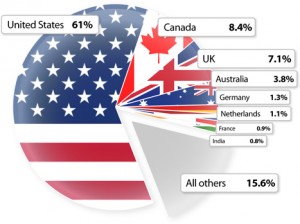7 Successful Tips to Improving Lead Scoring
 The marketing team is working hard to collect an abundance of information on potential leads using demand generation activities like email, newsletter, website and event registrations. Every lead has a unique profile based on how the information was obtained, their demonstrated interest in a product or service, and their demographic characteristics. Lead scoring is a powerful sales tool that will dramatically increase a company’s chance of conversion.
The marketing team is working hard to collect an abundance of information on potential leads using demand generation activities like email, newsletter, website and event registrations. Every lead has a unique profile based on how the information was obtained, their demonstrated interest in a product or service, and their demographic characteristics. Lead scoring is a powerful sales tool that will dramatically increase a company’s chance of conversion.
Here are 7 Successful Tips to Improving Lead Scoring
1) Use lead scoring as an opportunity to gather the best marketing and sales resources available in a collaborative effort to qualify potential leads. The marketing and sales departments have the greatest insight into potential customers and combining their expertise and experience will ensure that the lead scoring criteria is as accurate and relevant as possible.
2) Develop lead scoring characteristics that define an ideal customer using your current client base. Gather the marketing and sales team together to analysis existing customers and pinpoint their behavioral and demographic attributes. Take this information and create a profile that covers all of the signs that a lead has the potential to be converted into a sale.
3) Come up with creative ways to extract data from visitors on your site. Develop demand generation activities that entice potential leads to volunteer their information in exchange for educational or entertainment value. A lead can choose what they are willing to share, so it helps if there is an incentive for doing it.
4) Keep track of each lead’s frequency and interest. How often a lead visits a site, the more pages they click on while on the site, and the more information they download for future reference are all factors into how they should be scored. There is a higher chance of converting leads that have already invested a significant amount of time or energy into researching a product or service.
5) Ensure that the demand generation activities being used to capture information coincide with the data needed for effective lead scoring. The questions that are being asked in surveys and forms should spark the answers that are needed to accurately rank and prioritize the lead.
6) Review lead scoring criteria regularly to make sure it is generating the right leads. Leads that rank high should be easily converted into a sale once given to the sales department. If generated leads are not creating the response you would expect thenit is time to re-evaluate the behavioral and demographic characteristics outlined in the lead scoring process.
7) Don’t toss out leads that are not ready to purchase. Leads that have strong demographic attributes that are not actively pursuing your business are still valid leads. These leads should remain in the marketing automation system for further nurturing.
These seven successful tips will improve your lead scoring campaign. Lead scoring however does take a significant amount of time, experience, and commitment. It is not something the average person can easily master, which is why most people turn to a marketing automation expert for advice and guidance. Let Lead Liaison’s experts help you!











